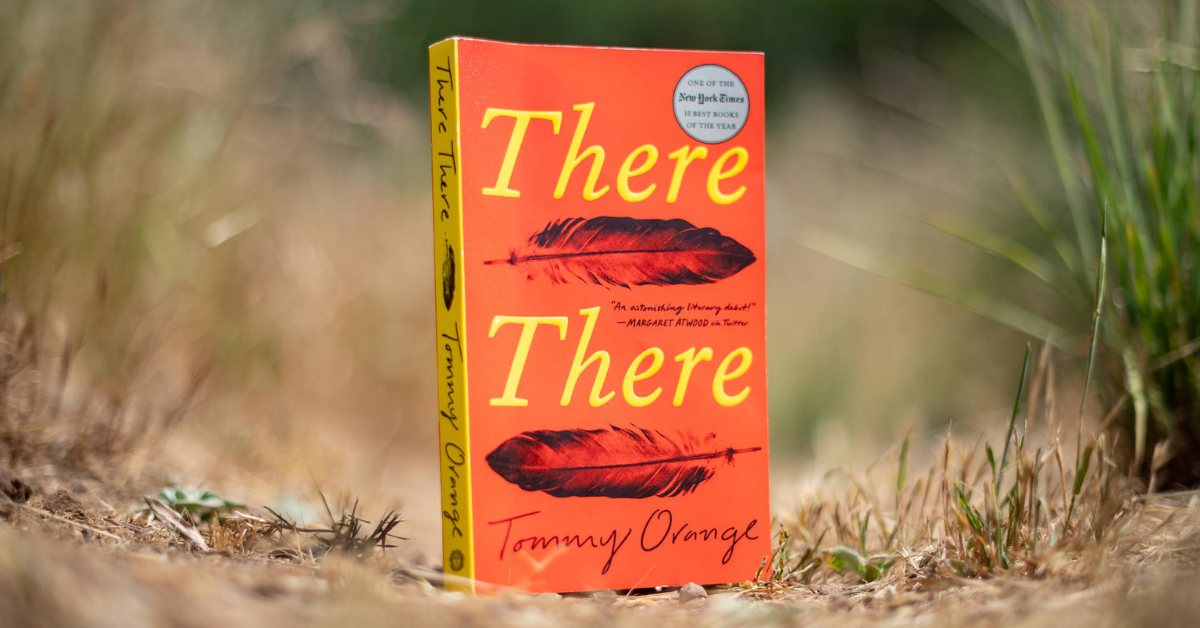
Rather than read Hamlet with my AP English Literature and Composition students as has traditionally been the case, I suggested to this year’s class that we read something different—something local, current, and engaging.
We ended the first semester reading Oakland-born Indigenous author Tommy Orange’s novel “There There,” set in the Bay Area and focused on a cast of Indigenous characters wrestling with their history and identity. My students were fascinated both by the book’s familiar Bay Area geography and by the questions the book poses—along with the answers it suggests. Hamlet remains timeless, but texts like this one allow us to explore ideas that include characters who talk like, look like, and live like my students, many of whom rarely if ever see their perspectives reflected at school.
When teachers select texts that are far from their students’ experiences, we add multiple invisible hurdles to learning. Overly complex language stymies early academic growth while literary experiences that uniformly neglect my students’ perspectives condition them to perceive their point of view as inherently less valuable than those illustrated in the text. When texts relate to my students’ lives, they are able to access literary analysis and research-based writing faster, in the process also learning that their lives and communities are legitimate sources of wisdom. This is not to say that culturally responsive texts are "easier" texts—some are quite complex—but when students have a lot of background in a subject, they can more easily read and comprehend complex texts.
My students connected Orange’s depictions of urban Indigenous life to redlining in the Bay Area. They researched the past and present experiences of California’s Indigenous communities, expressing dismay at the continued disenfranchisement of the Coast Miwok, the original inhabitants of the land where my school sits. They discussed in-depth how racism and classism manifest in increasingly socially stratified California. Our class conversations transcended the dry analysis I had come to expect with more traditional readings. Instead, students were deeply engaged in discussing the book and their lives in conversation.
The California Department of Education and the California Teachers Association already recognize the improved student outcomes associated with culturally relevant pedagogical practices: students refine thinking and reasoning skills, learn to appreciate their own culture while also appreciating others’ cultures, and practice identifying and solving real-world problems.
Without culturally relevant teaching and content, students’ education only loosely relates to their lives. Moreover, schools remain even more separate from the communities in which they operate, and teachers’ jobs are made even more difficult, communicating less relevant materials to students who are increasingly more socially aware. This is doubly true for historically and multiply marginalized communities across California.
To support teaching and learning that centers students’ lives, California’s Local Education Agencies must emphasize culturally relevant education across subject areas. Establishing methods and adopting materials that reflect the students in the community is likely to not just prove effective but also increase buy-in.
Schools and districts must also refine evaluation criteria for new and current teachers to include culturally relevant teaching and materials, centering student experience within classroom practice. If educators and administrators do not assess for new materials and methods, then we are effectively labeling them voluntary. If they are at the center of evaluation, then new and existing teachers will recognize their importance.
Lastly, schools must partner with communities, parents, and students to develop culturally relevant practices, reading lists, and other materials to make these groups co-participants in school improvement. The result will be a vibrant school climate that reveals and celebrates diversity rather than papering it over. Moreover, students, being involved in the development of the culture and coursework, will be more engaged in the life of the school.
When we finished reading “There There,” every student expressed a desire to learn, read, and—most importantly—do more. Some of them moved on to other Indigenous authors, deepening their own learning, while others tried to identify ways to lift up the repatriation efforts of local Indigenous communities. Many tried to grapple with the book long after it was closed, either with how closely it described their lives or how different it was from their day-to-day life.
There are a thousand other opportunities to implement new methods and practices. What we must do first is recognize that our existing ones are, at best, fine, and admit that our students deserve more than that; they deserve a profound and exhilarating education that leaves them deeply changed.
David Tow teaches AP English, honors philosophy, and environmental leadership at Terra Linda High School in San Rafael, California. He is a 2021-2022 Teach Plus California Policy Fellow.
The fight for educational equity has never been just about schools. The real North Star for this work is providing opportunities for each child to thrive into adulthood. This means that our advocacy...
Your donation will support the work we do at brightbeam to shine a light on the voices who challenge decision makers to provide the learning opportunities all children need to thrive.
Ed Post is the flagship website platform of brightbeam, a 501(c3) network of education activists and influencers demanding a better education and a brighter future for every child.
© 2020–2024 brightbeam. All rights reserved.